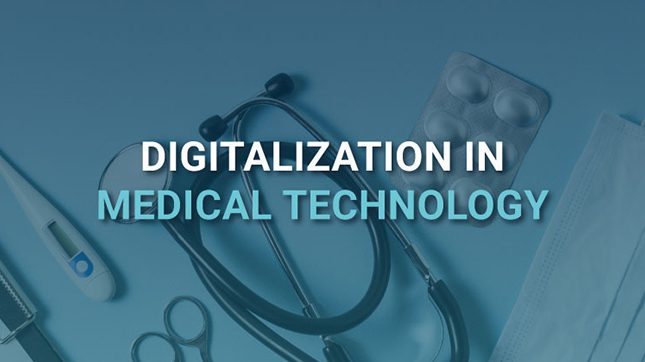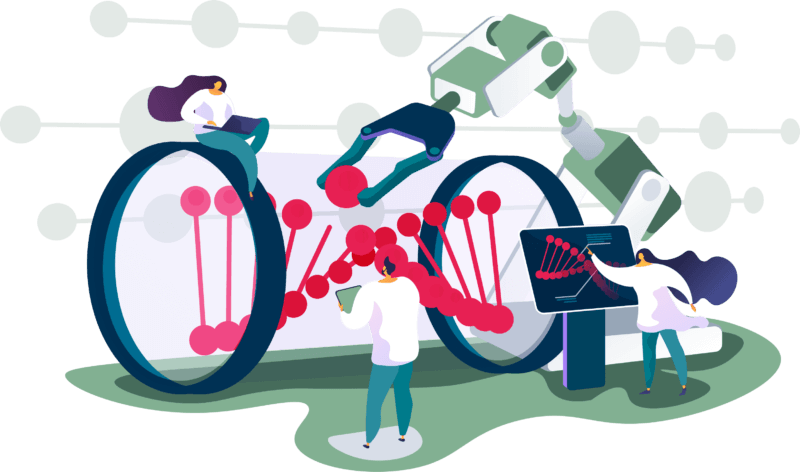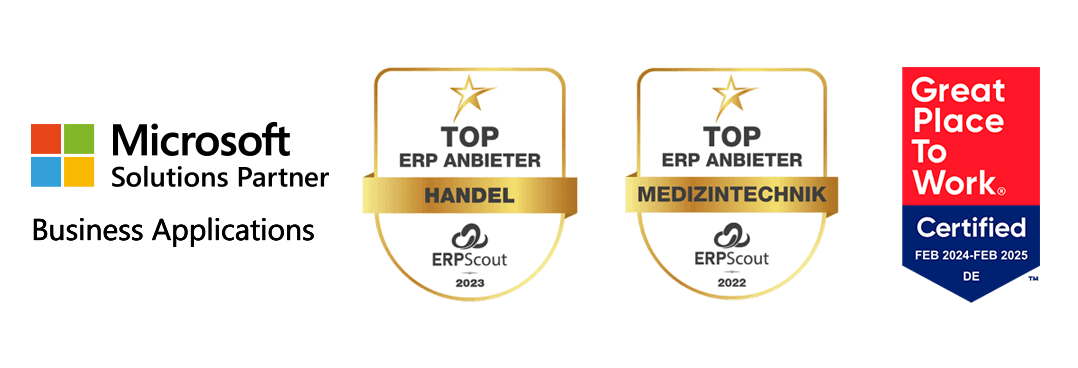Digitalization in medical technology
By the start of the pandemic, the importance of digitalization in every industry was finally recognized. It generates countless potential opportunities and opens new perspectives—in particular, for the future of medical technology.

25. January 2023
Challenges such as staff shortages, rising costs, and increasing competition can be effectively addressed with digital options. New healing methods, miniaturization, eHealth, and homecare are shaping the MedTech sector. At the same time, increasing numbers of rules and regulations are proving challenging. Digital trends, opportunities, and challenges – we take a look behind the scenes and find out how digitalization affects medical technology.
Opportunity and challenge in one: the development of medical technology
The medical technology industry—a vital part of the healthcare sector—is changing rapidly. The events of the past few years have brought about significant changes. For companies, this means both a challenge and an opportunity.
It’s clear: The challenges are immense. To tackle and master these challenges, many organizations in the medical technology industry are turning to digitalization. The potential benefits are numerous.
Potential benefits and opportunities of digital medical technology
Our ERP for the digitalization of the medical technology industry
Optimize processes in the medical technology industry with our ERP industry solution YAVEON ProBatch. Your key to successful digitalization and optimized operational processes.

The biggest digital trends in medical technology
There are many aspects to medical technology and the sector’s outlook. Here are some of them:
Artificial intelligence and big data
Artificial intelligence (AI) offers considerable potential for digital medical technology. Machine learning is designed to aid diagnostics, and the early detection of diseases and treatments. These machines help doctors to evaluate ultrasound and CT images, for example, and facilitate patient monitoring. With the automatic capture of medical data, treatment plans, supported by AI, achieve improved results. In addition, AI makes it possible to collect, process and evaluate even large amounts of data – so-called big data.
E-Health
Electronic Health, or e-health, moves medical consultancies, previously done in person, to an online platform. The best and most common example: virtual consultations in which the doctor assesses the patient’s health via webcam. Portable ultrasound devices enable healthcare professionals to capture images in an ambulance and send them to the clinic. And online appointment systems are also growing in popularity. E-health has many advantages. Diagnostics are not only easier, but also faster, advice is personalized, and therapies are optimized with better time management.
Sensor technology and mobile health (mhealth)
These are mainly implanted sensors, wearables, and special apps that automatically record health data when worn. The tools fall into the category of mobile health, or mHealth, i.e., health devices that can be used regardless of location. Providing an excellent opportunity, for example, for the use of pacemakers, and devices to monitor blood sugar or blood pressure. All these tools make patients' everyday lives safer – and easier. Because via mHealth, it is also possible to exchange information digitally with the attending physician.
Robotics and connectivity
Robots are already being used in the operating theaters to support surgeons, particularly when extremely high precision is required. In addition, clinics and medical offices not only connect their own devices with each other via software, but also connect third-party devices via interfaces.

Individually manufactured medical devices
Digitally recording and processing medical patient data makes it possible to adapt medical devices individually. It’s already possible to make a 3-D print of prostheses or an artificial joint, for example in preparation for an operation. But that's not all. In the future, it will be possible to make 3-D prints of transplant organs.
This is what successful digitization in medical technology looks like: examples
Digitalization, with all its facets, has already arrived in the medical technology industry and is becoming more and more embedded.
Ultrasound
In the past, an ultrasound device was installed permanently in one location and involved a one-time expensive purchase. Nowadays, mobile, app-based devices can be rented for a monthly fee and used on the go.
Early detection of aneurysms
Another prominent example of digital technology in medicine is the early detection of aneurysms. General practitioners can measure pulse curves on hands and feet. An algorithmic evaluation predicts the probability that an aortic aneurysm is present.
Cancer Therapy
The digitalization of medical technology also offers significant advances in cancer therapies. For the early detection of tumors, well-trained AI data models can be used accurately - at times these can exceed the capabilities of the human eye. Based on CT images and laboratory values, algorithms assess tumor size, tissue structure, and composition. Another algorithm calculates the odds of patient survival, and uses this to predict the success of the proposed therapy.
Cochlear implant
The coming years will bring immense progress for those who need a cochlear implant. Using CT images, which show the size of the cochlea, an algorithm evaluates the patient's hearing profile. The combination of the data results in a recommendation for the manufacture of the implant.
Digital technologies are already finding their way into other industries and offer a wide range of potential applications for optimizing the processes that prevail there. For example, the same tools are used in the digitalization of the food industry, but there are completely different potentials and application scenarios.
Software and the right partner: how they can support you
We can see that before we can benefit from these stunning advances, we must overcome various challenges. How can we do this? How can companies close the gap, and benefit from the potential of digitalization? It’s simple. With the right partner, who has the necessary know-how and the right software solution, such as Enterprise Resource Planning. But what’s still missing is the specific features for your industry. ERP industry solutions such as YAVEON ProBatch are the answer.
Sounds good, but how does YAVEON ProBatch support the digitization of the medical technology industry in practice? Here are just some of the ways:
Conclusion
The world is changing. This is also noticeable in the medical technology industry. Organizations are concerned about legal foundations, digitalization, competition, shortage of skilled workers, and urbanization. Every single area offers excellent opportunities – and at the same time is riddled with obstacles. The trick is to turn challenges into opportunities and to exploit emerging potential. Companies can benefit from more accurate diagnoses, improved medical care, bridging of staff shortages, and lower costs.
But how can this be achieved? Software is a proven and future-proof option. In most cases, MedTech companies can safely position themselves for the future with an ERP system that provides an entire universe of applications, interfaces, and apps in the Microsoft 365 spectrum. But even here challenges lurk, because the solution is only helpful if it includes all the necessary features. The secret is the right industry solution paired with a software partner with the necessary expertise.
If you are a Med-Tech company that wants to find out how to harness digitalization to grow and profit in the long term, let us show you the YAVEON competency in the medical technology industry. How? By getting to know our ERP solution and learning how to successfully master your digitalization.






